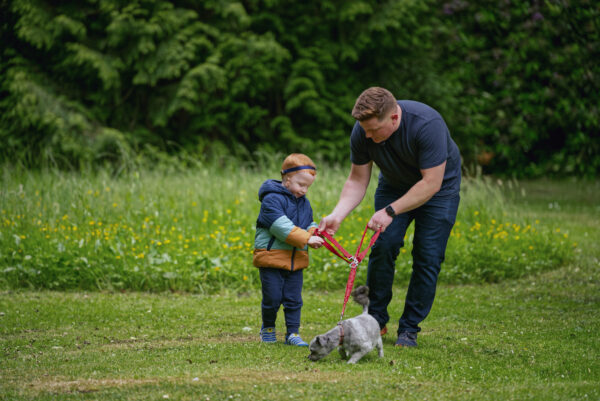There are many communication strategies to help boost your child’s listening and talking skills—such as lip reading, using supporting imagery, and key word signing.
You can use auditory and verbal strategies during everyday routines to boost your child’s listening and talking skills. Some routines that may be part of your day include:
- Washing clothes
- Checking the mailbox
- Watering the garden
- Washing the dishes
- Putting away clothes
- Putting away toys
- Cleaning the floors
- Cooking a meal
- Getting ready for bed
These typical household routines can be used to develop your child’s listening, speech and language by “listening first” and talking as you do them. Listening first means you say the words before you show your child the item or action you are talking about.
Chatting when cooking
Children usually enjoy getting involved in making food as well as eating it! This is a great way to build their language even further because there is a lot of talking involved in preparing food.
A parent’s tip
“We’ll get our ingredients together before we make a recipe, and I’ll have him help me count and measure – it’s just constant language.” – Tracey, mother of Cochlear™ Nucleus® System recipient Dylan
Here are some things you can talk about when preparing food together:
- Name the ingredients and cooking utensils you need.
- Describe the food—talk about the color, taste, smell, texture.
- Talk about what you do with the utensils.
- Explain each step before you do it.
- If something goes wrong, talk about how you can fix it.
- Use a variety of words—talk about ingredients using descriptive language; that eggs are laid by chickens, how and where spices are made, how food is farmed, and so on.
Make the most of bedtime routines
There are lots of different routines for bedtime. While maybe not every night, try as often as possible because it’s comforting for your child.
Here are some ideas:
- Sing a song.
- Talk about something that happened in your or your child’s day.
- Read a book together.
Parents say that reading is an amazing way for parents to build their child’s language skills. So how do you keep the conversation flowing when it comes to story time? There are a lot of fun techniques, especially if you are reading with young children.
- Point out animals, objects and colors, or ask your child to point these out to you.
- Make the sounds the animals might make—and encourage your child to imitate you.
- Before you turn a page, ask what your child thinks might happen next.
- When you read one of their favorite books, try not to read the words. Instead talk about the pictures—what you see, what’s happening, what you like, what might happen next.
- Encourage other family members to do the same—older siblings often love joining in, and your child will learn so much from the different types of language and words you all use.
A parent’s tip
“Reading was a natural, easy way for us to bond with our son. A good piece of advice a teacher gave to us was to read what your child wants to read versus what you think they should be reading. Even if we’d read them a million times, or even if they were comic book in nature. It may not be what I would choose to read but he loved it and still does.” – Tracy, mother of Dylan
Learn more about supporting your child here.

